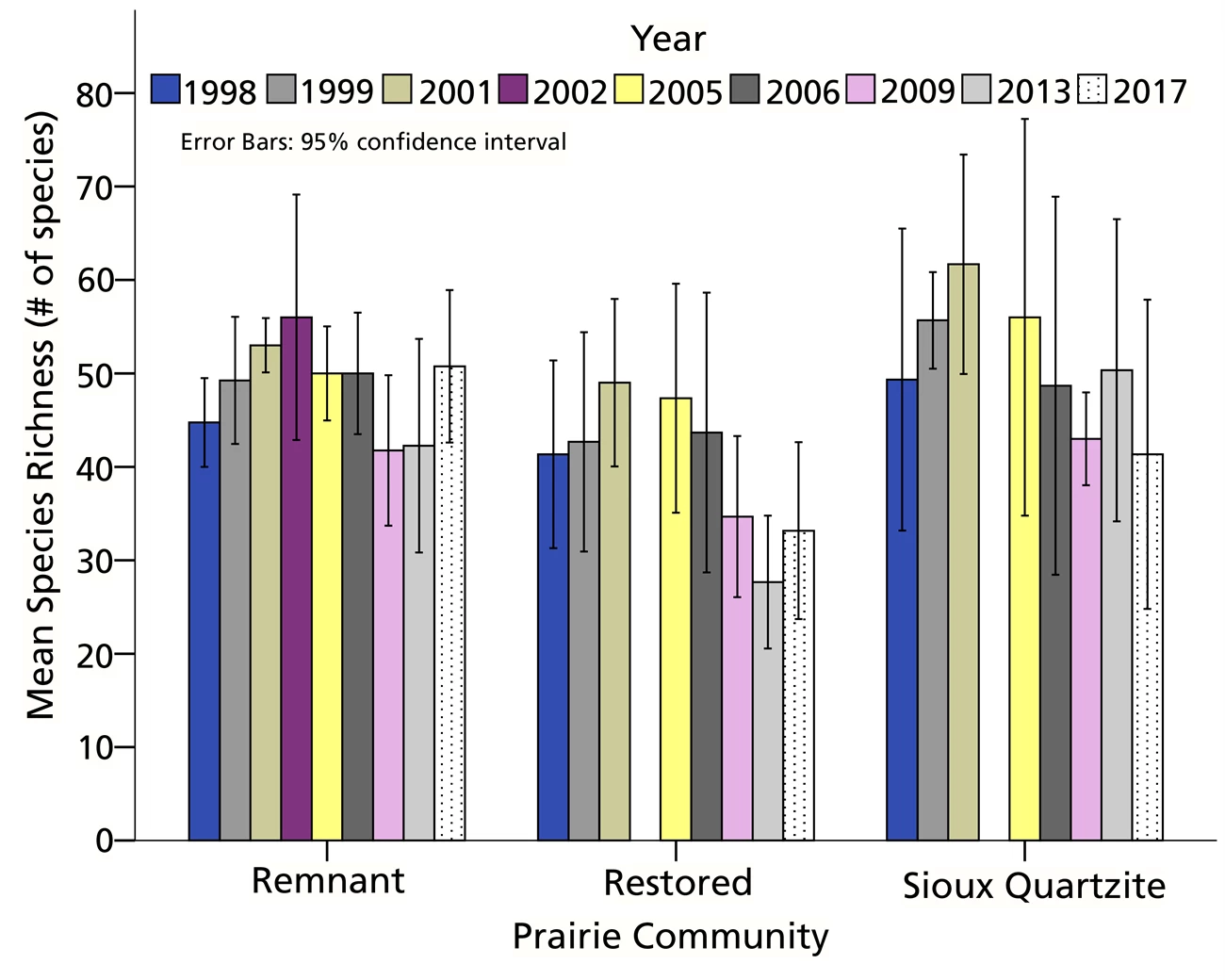Last updated: August 17, 2021
Article
Prairie Plant Community Monitoring at Pipestone National Monument

NPS
Park Prairies
The prairies at Pipestone National Monument are intertwined with the park's rich cultural history and are important for ecosystem conservation. There are three different types of prairie at the park. The Sioux quartzite prairie is a rare type. It is much like a glade where herbaceous plants (non-woody plants) dominate because rock near the surface prevents trees from growing. Sioux quartzite prairie has purple quartzite rock on or near the soil surface and unique plants grow in these rocky outcrops. Remnant tallgrass prairie still remains at the park and includes species that are increasingly rare, regionally. Lastly, reconstructed tallgrass prairie was planted to return parts of the park to prairie.
The Heartland Network monitors prairies at Pipestone National Monument to help protect unique plants and habitats. For example, federally listed plant species rare in Minnesota are found in the park. We provide long-term data to park managers so they can implement management actions that help conserve these precious prairie ecosystems.

NPS
Plant Monitoring
The Heartland Inventory and Monitoring Network scientists have monitored the prairie plants since 1997. We examine data on plants at 13 sites across the park to understand how the prairies might be changing. Information on climate, fire history, how much of the ground area is covered by plant material or rock, how many plant species are present, and how much ground area each species covers (a measure called plant cover) is collected at each site. These measurements allow us to assess the current condition of the prairies and to track them over time.
Prairie Plants 1998–2017
The number of native plant species (also called species richness) in Pipestone National Monument was highest in the Sioux quartzite prairie, especially in 2001–2002 when species richness peaked. The restored prairie had the fewest species. Biological diversity indices that measure the amount of diversity in each site, prairie type, and the park as a whole followed similar patterns to the number of species.
Woody plants and trees were infrequent, especially in the Sioux quartzite prairie. Two non-native grasses, smooth brome (Bromus inermis) and Kentucky bluegrass (Poa pratensis), were common, but fire temporarily reduced them.

NPS

NPS
Prescribed Fire in the Prairie
Frequent burning of the prairies at Pipestone National Monument helped to keep them in good condition. The amount of plant litter increased and bare ground decreased as the time since the last fire increased. Prairie plant communities at the park have been relatively stable through time despite variations in ground cover, drought, and where and when prescribed fire was used.
For More Information
View the Full Report.Visit the Heartland Inventory & Monitoring Network website.
